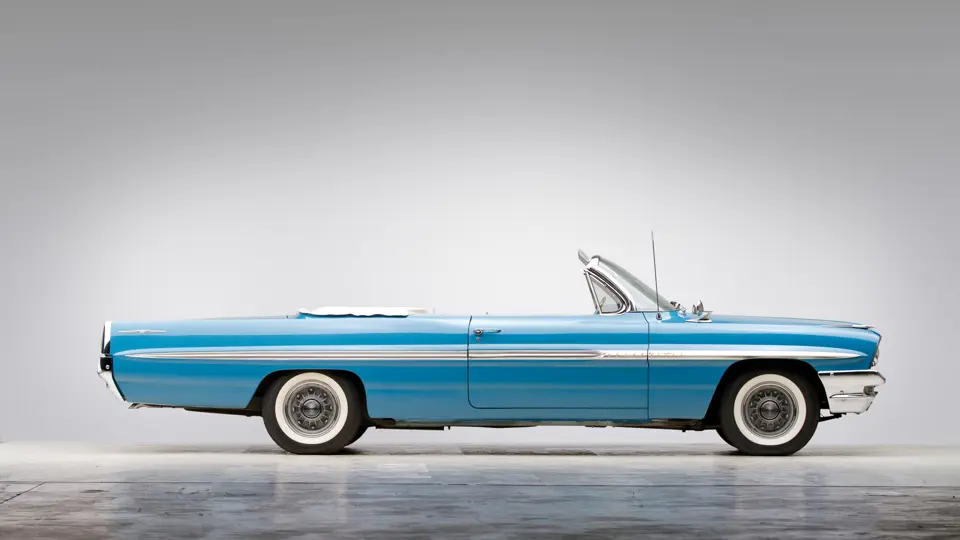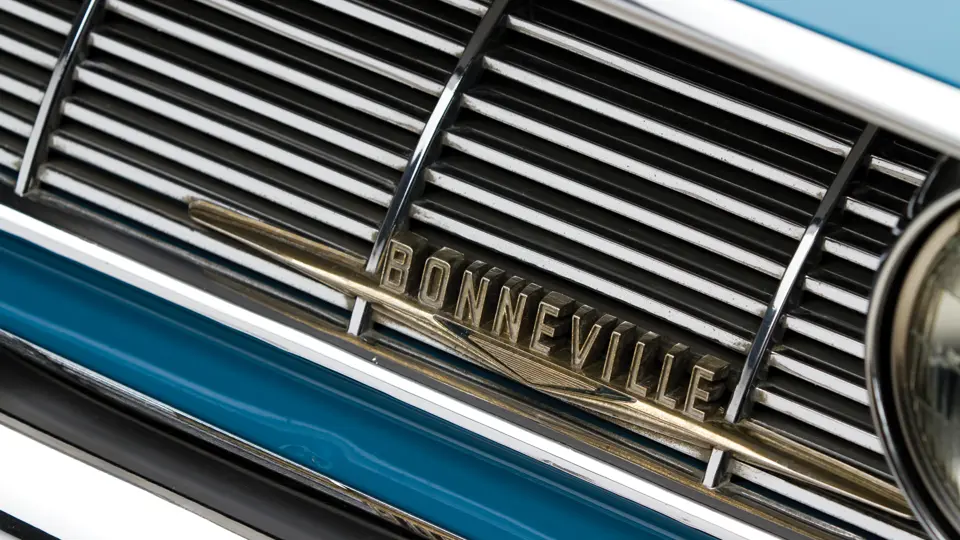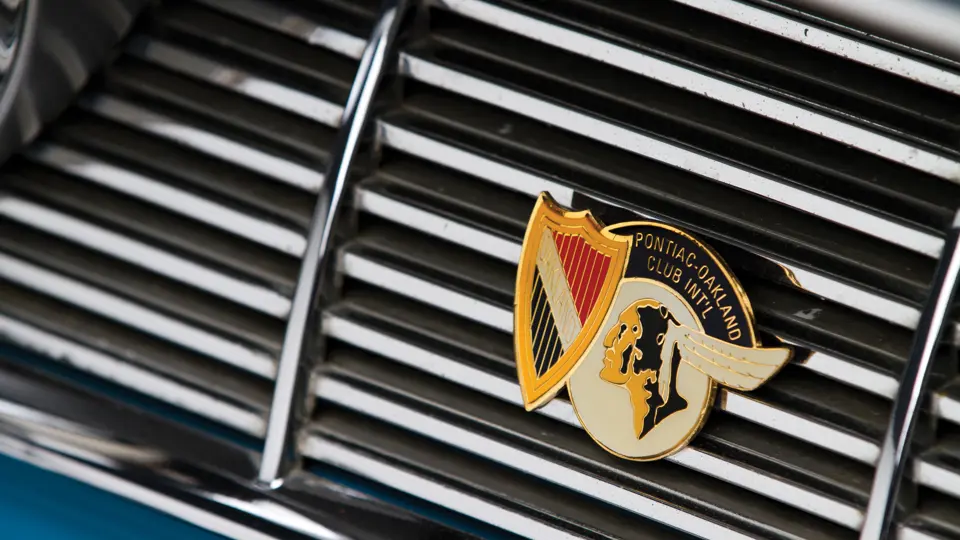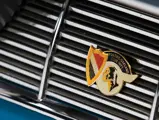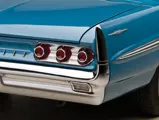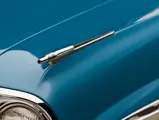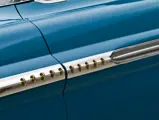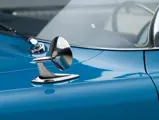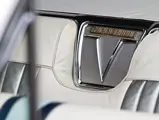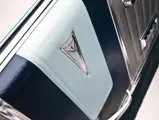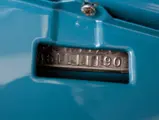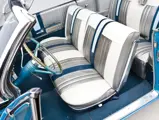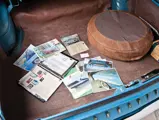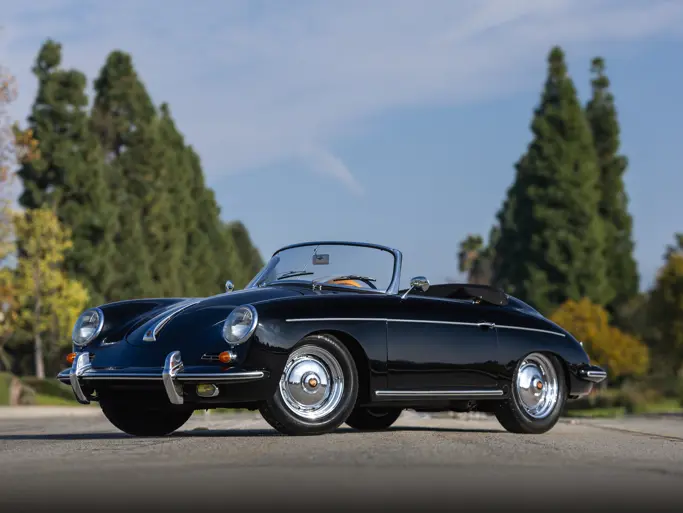A virtually all-original 54,000 mile car
303 bhp, 389.0 cu. in. OHV V-8 engine, four-speed Super Hydra-Matic transmission, coil spring independent front suspension, live rear axle with semi-elliptic leaf springs, and four-wheel hydraulic drum brakes. Wheelbase: 123.0 in.
Pontiac abandoned 1959’s split grille for 1960. Instead, a horizontal-bar pointed affair was adopted, accompanied by an ad theme titled, “A fresh point of view.” It was a colossal misstep, soon recognized as a failure to capitalize on the strong image of the first Wide Track cars. The division quickly recovered and returned a two-section grille to the redesigned 1961 models.
Part of a corporate program, the ’61s were smaller and lighter than the 1959s and ’60s. The perimeter frame returned, and an all-new body was designed by Jack Humbert, who had joined the company in 1958 and worked on final touches for the 1960 cars. The track was actually reduced by an inch and a half, but the Wide Track advertising theme continued. At 62-1/2 inches, Pontiac’s track dimension was still the widest in the industry.
Pontiac offered four series in 1961, in addition to the new compact Tempest. Only the entry-level Catalina and top-flight Bonneville series included convertibles, and there was a $400 price differential between them. For the extra $400, the Bonneville customer got four inches more wheelbase, 100 pounds more steel, and more importantly, a four-barrel carburetor and 36 more horsepower, foam cushions, a padded dashboard, and all-Morrokide upholstery, with an option for leather. This was not lost on 1961’s customers. Fifty percent more people bought Bonneville convertibles than the cheaper Catalina.
Even on close inspection, it is difficult to believe that this is a nearly original car. Formerly owned by Georgia collector Dick Peden, it has had one repaint but is otherwise undisturbed. In its original color of Richelieu Blue, it is straight and true, and the leather four-tone interior is all but unworn. A vertical pattern in silver, white, and two shades of blue, it is an excellent example of the distinctive Bonneville style. The blue carpet on the floor is protected by Pontiac throw mats. The top is black canvas and has a white vinyl boot cover.
The engine compartment is nicely detailed, with much original hardware. The undercarriage is very clean and protected with a textured finish. Medium-width whitewalls are mounted on a set of the prized Pontiac eight-bolt aluminum wheels and hubs. Other equipment includes power steering, power brakes, a power top, power windows, a heater, and a later model cassette dual-band radio with a factory rear speaker. Additionally, it has the desirable acrylic steering wheel, a padded dash, a day/night mirror, seat belts, and a clock. Accompanying the car are an assortment of brochures, a copy of the build sheet, and a photo album of the repainting process.
The odometer shows slightly more than 54,000 miles, appropriate to the condition of a well-kept car. The fact that it is half a century old makes it more than well-kept. It’s not a stretch to call it absolutely remarkable.
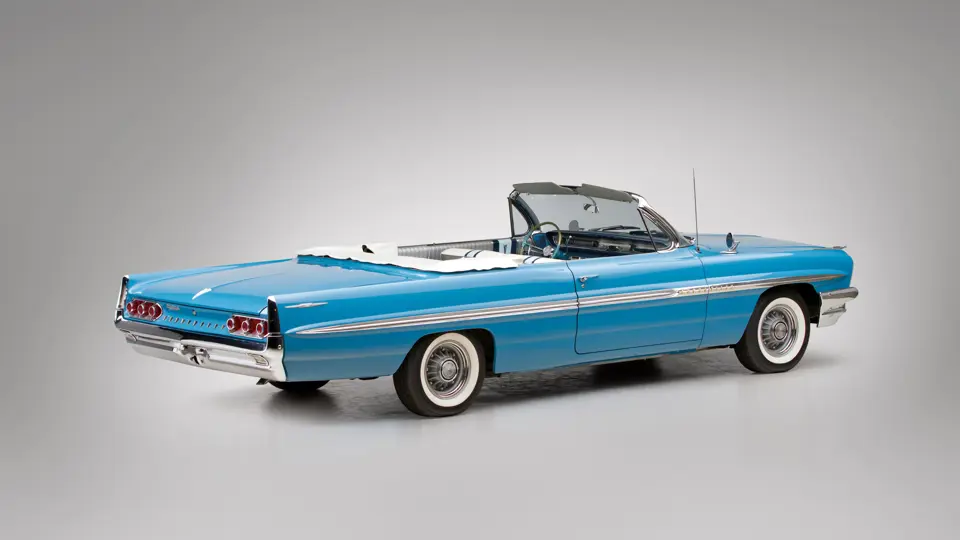




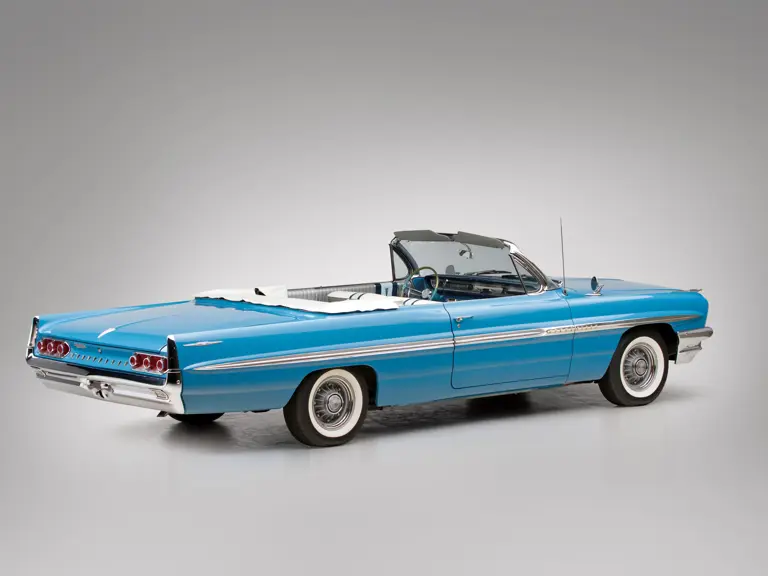
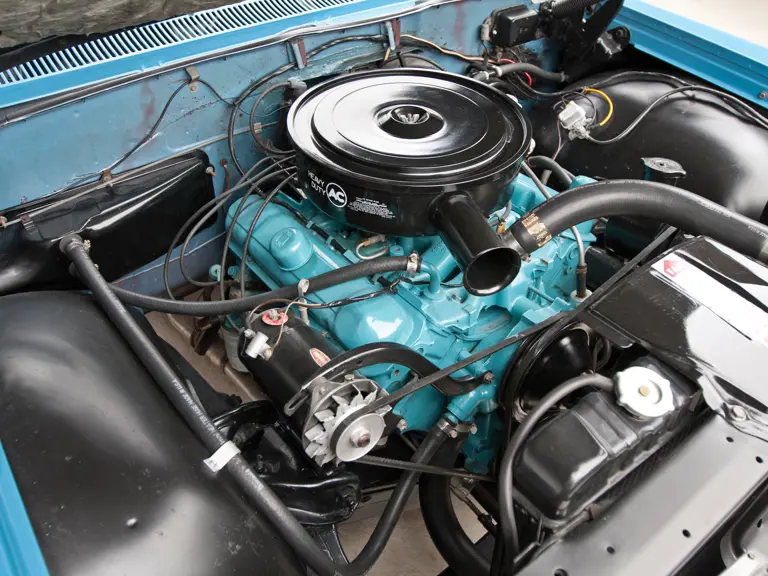
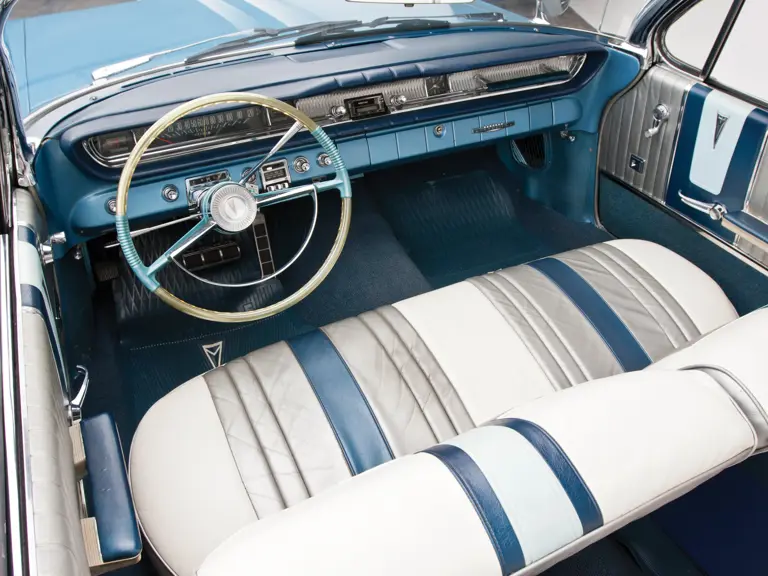


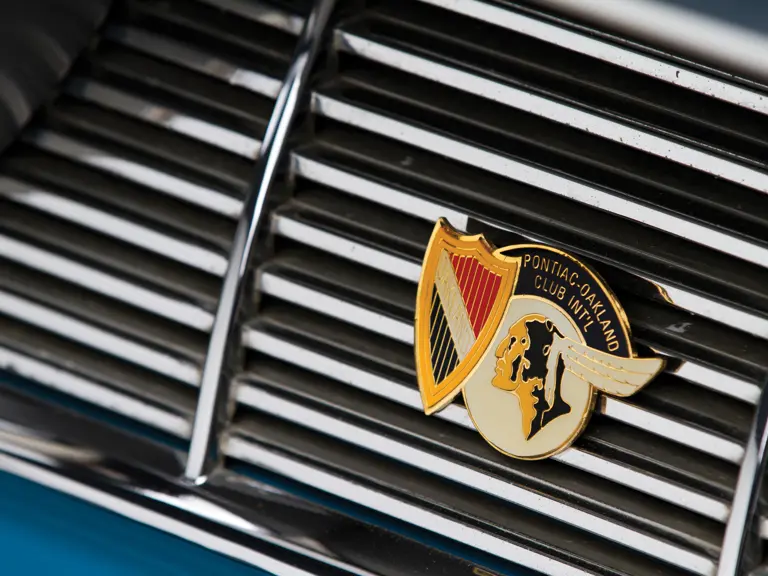

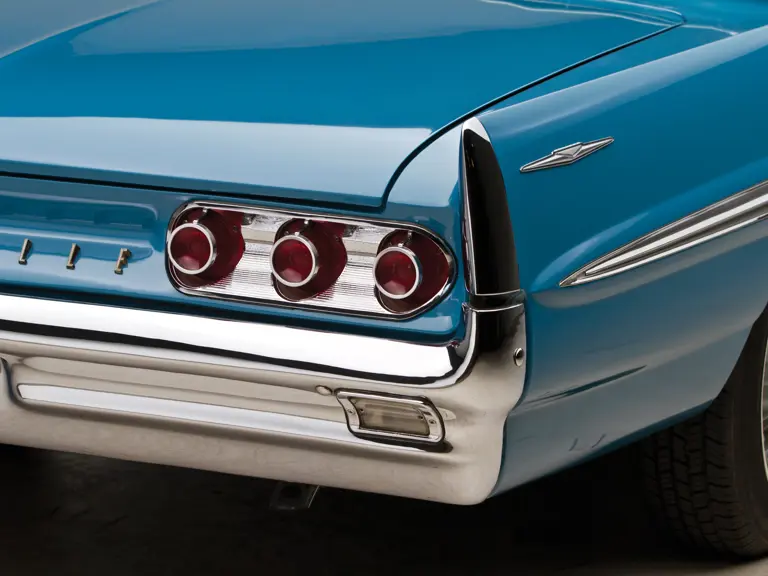


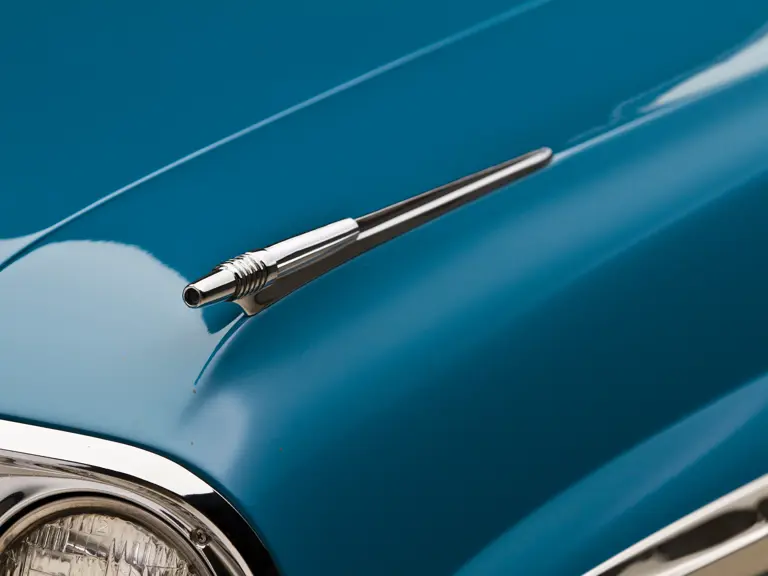
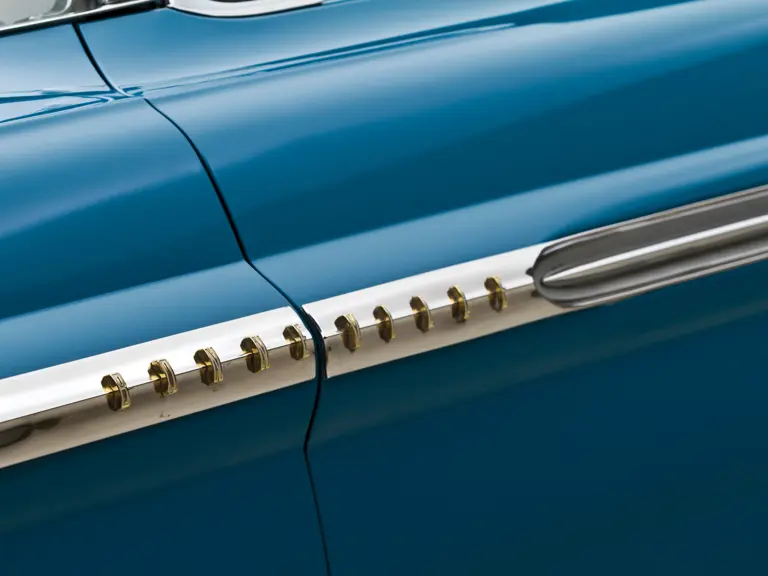
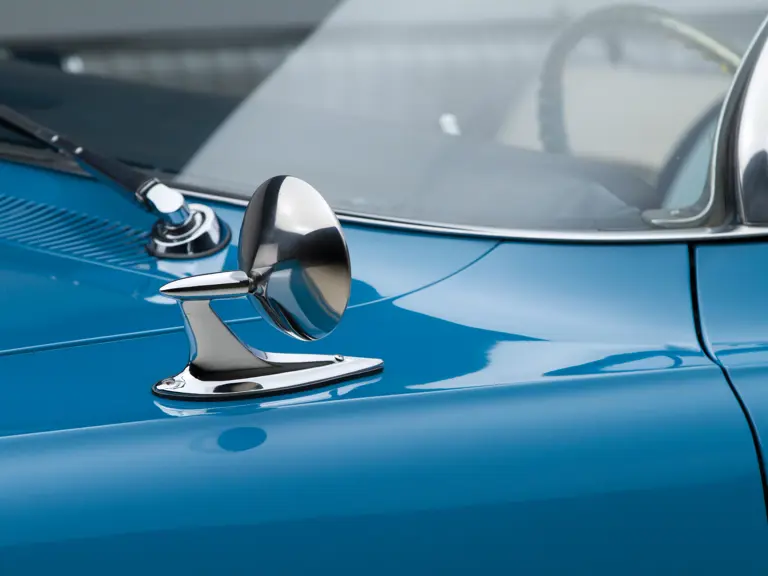
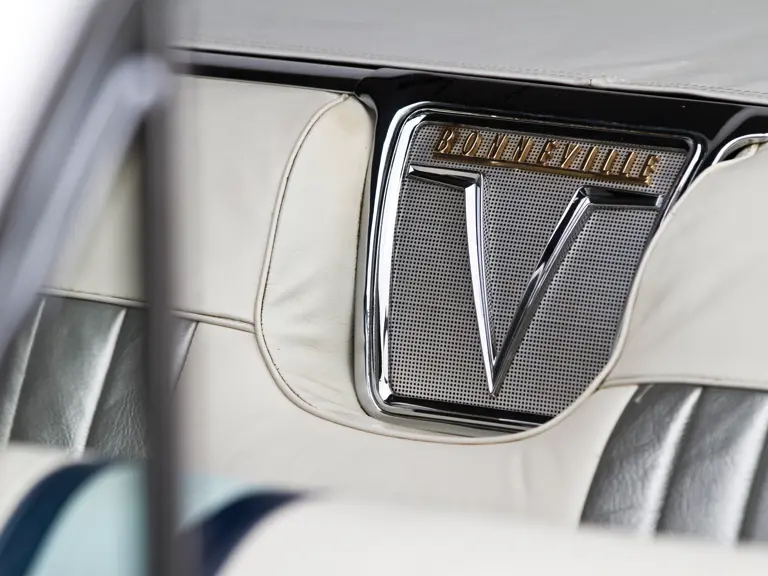

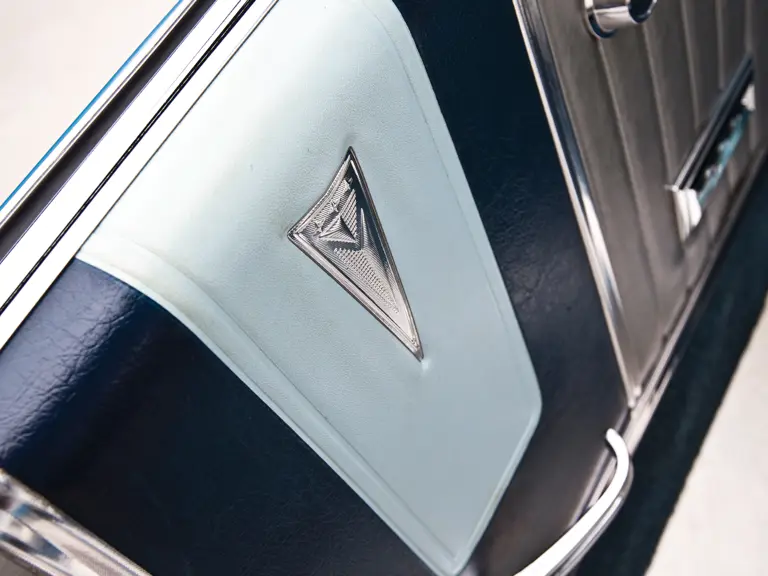
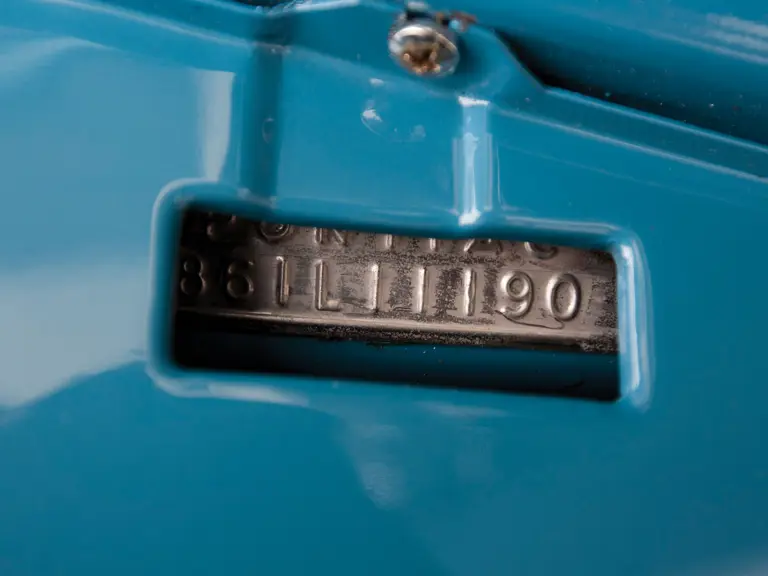
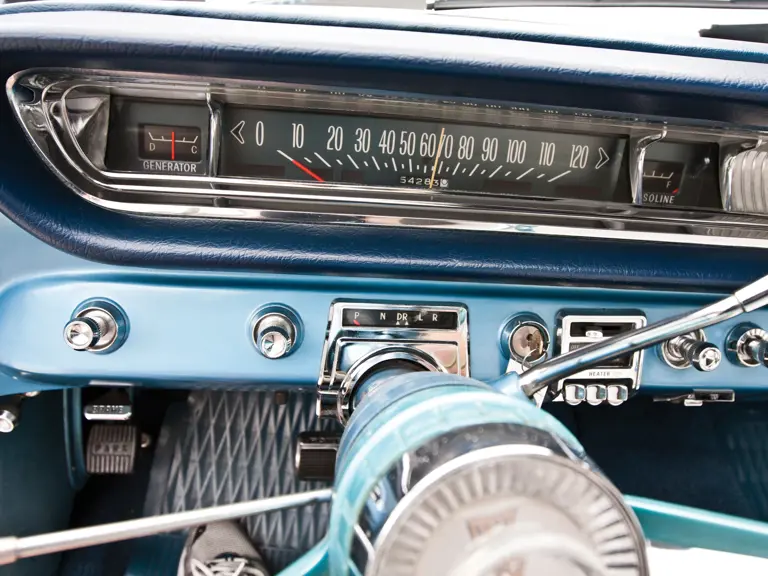
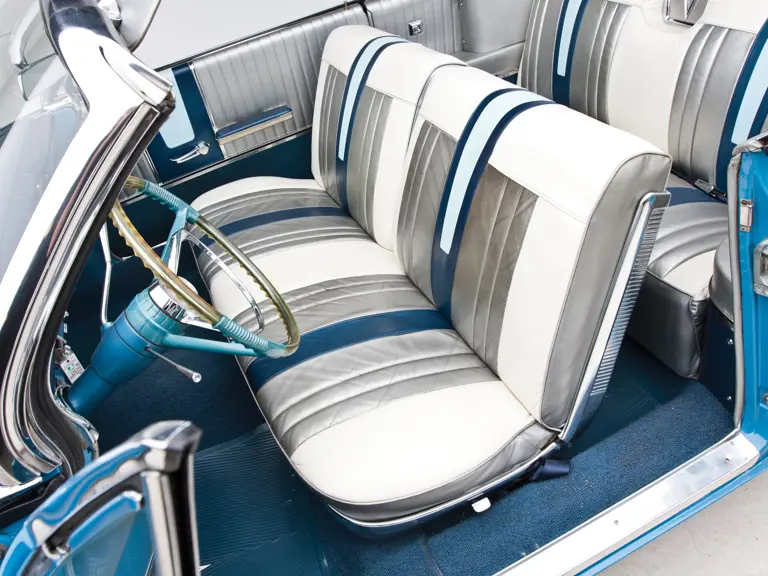
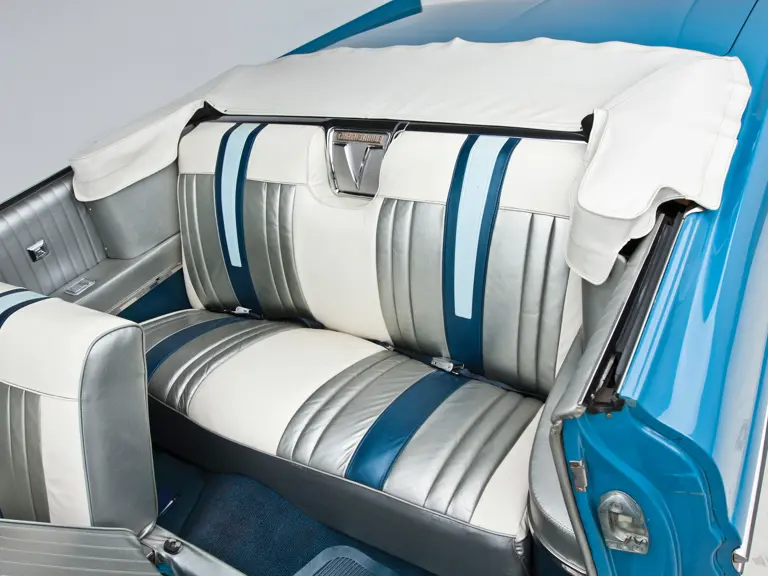
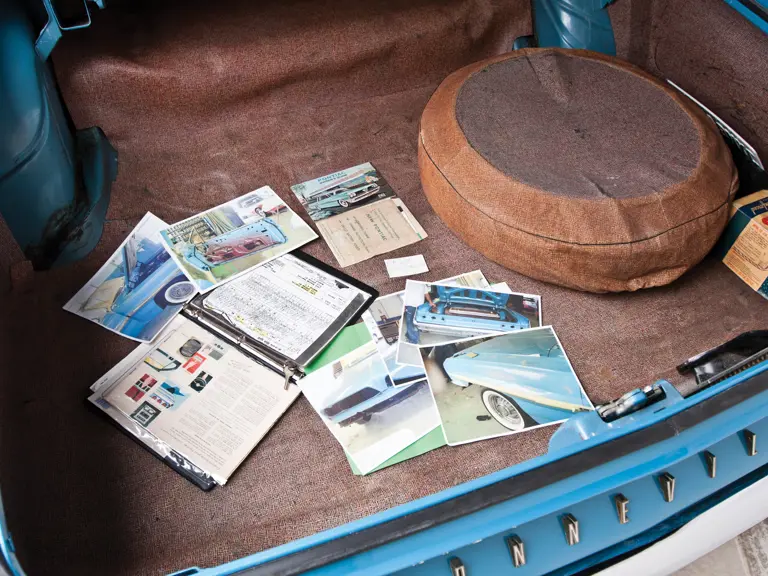
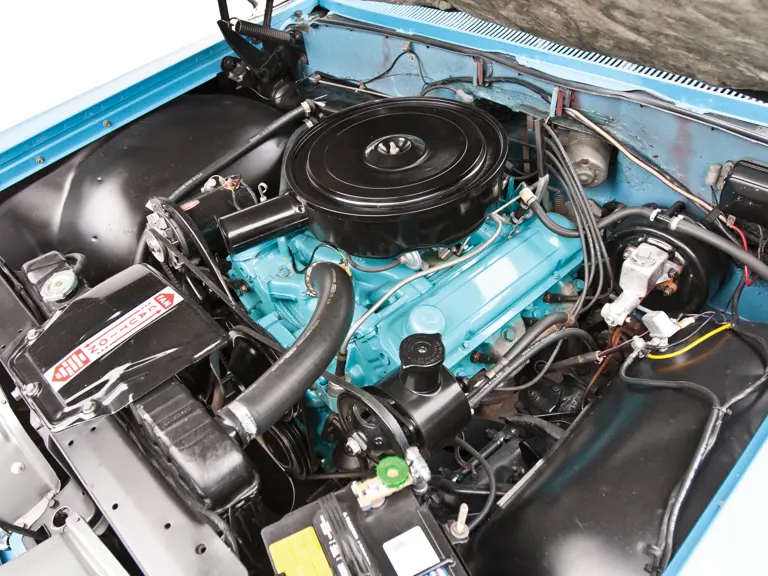
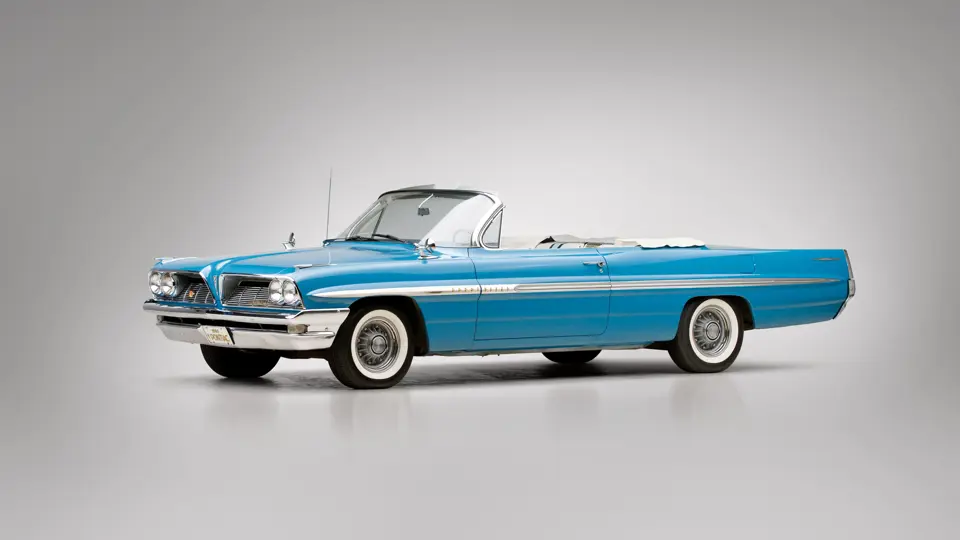
 | North Palm Beach, Florida
| North Palm Beach, Florida
